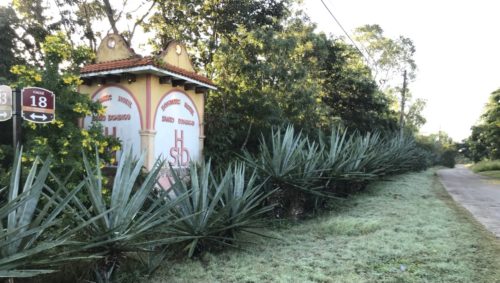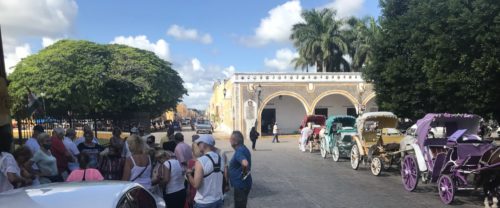
Hacienda Hotel Santo Domingo, @ cruz de c.18 y c.33, Izamal, Yucatan

We wanted to travel a bit, safely, so we headed to what I think of as the Indigenous capital of Yucatan, Izamal – (we live in the Hispanic and political capital, Mérida). Izamal is about 72 kilometers (45 miles) to the east of Mérida, and north of the Cancún highway on Route 11. It took us about 100 minutes from centro to centro to get there, driving leisurely. The express bus is probably faster (scroll to From Mérida to Izamal).
We had a delightful stay at Hacienda Hotel Santo Domingo, which is run by Harald, an affable man from Austria, and his lovely Mexican wife, Sonia. Harald studied tourism as a lad, and his design-sense is excellent. They have twelve rooms in an elegant facility, depicted at their website.

Dining room where we enjoyed a fine candle-lit dinner.

Poolside breakfast
The hotel is nestled quietly on the outskirts of the city, a short ten-minute walk to centro, straight down c.33.

Handsome cabs (calesas) are lined up, while a tour group listens to a guide.
After a relaxing visit in a gentle setting, it’s back to the city of the conquistadores.

Mérida : the remate, Paseo Montejo @ c.47


